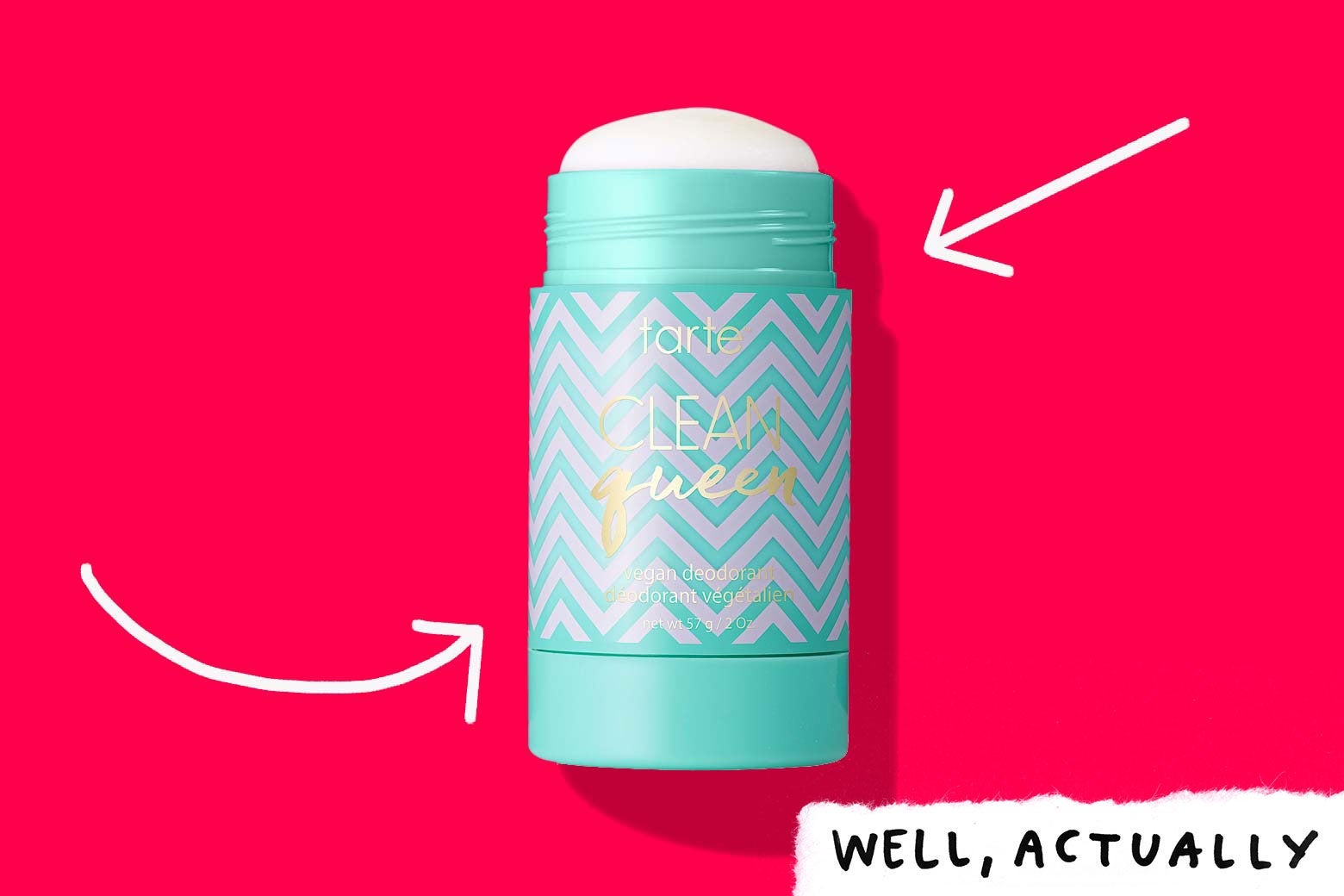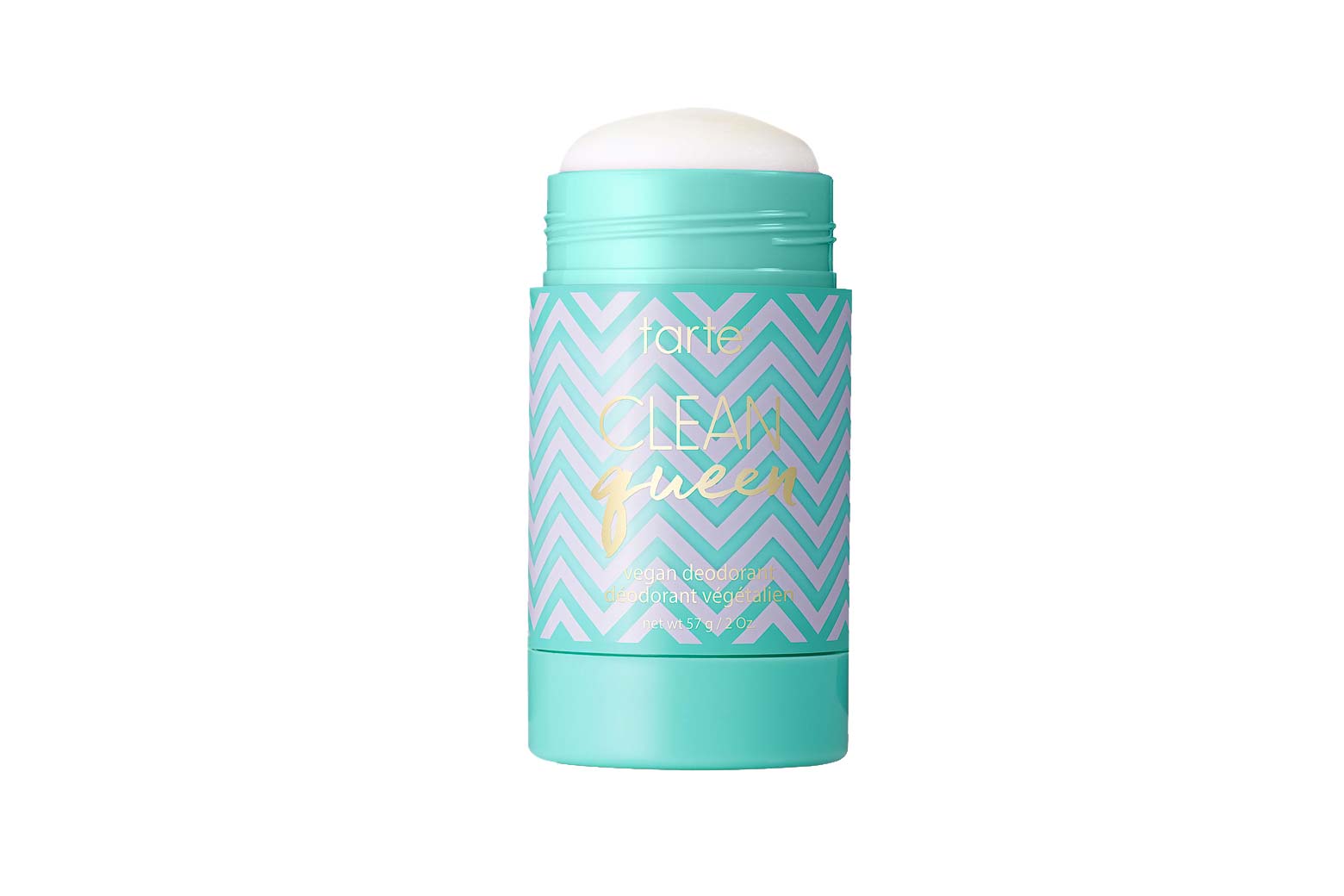Well, Actually is a column by Slate’s Shannon Palus. She tests health and wellness products to help readers figure out what they should try, what they should skip, and why.
“I just got information from a health seminar that I would like to share,” read an email that circulated in 1999 and was later debunked on Snopes. “The leading cause of breast cancer is the use of anti-perspirant. What? Yes ANTI-PERSPIRANT.”
“Toxins are purged in the form of perspiration,” the email explained. Swipe on an antiperspirant that prevents sweating day after day, and, by the email writer’s logic, the “toxins” will build up in the lymph nodes beneath your pits. To avoid this, deodorants—which do not stop one from perspiring, just attempt to mask the smell—are the healthy option. Like any good entry in its genre, the email ended with a call to action: “PLEASE pass this along to anyone you care about.”
Well, people did. Like cicadas swarming up from the Earth when the timing is right, deodorants are currently thriving as beauty products trend toward all things “natural” and “clean.” The notable formula difference between a deodorant and an antiperspirant is that the former lacks aluminum, the stuff that sits in pores and keeps them from sweating and sounds yucky and whose absence has become an advertising rallying cry, even though “aluminum-free deodorant” is technically a redundant statement akin to “fat-free popsicle.” The divide between deodorant (contains no aluminum, doesn’t stop sweat) and antiperspirant (does contain aluminum, does stop sweat) can be confusing. The entire category is often referred to as “deodorant” colloquially and even by companies themselves. (This Dove Men+Care “deodorant,” for example, lists aluminum as an ingredient.) But big brands like Dove, until recently, sold mostly or exclusively antiperspirant, with deodorant offerings generally being geared toward men. (Speed Stick, for example, offers both, while Lady Speed Stick offers just antiperspirant, labeled as “antiperspirant/deodorant.”) In January, though, Dove launched its first women’s deodorant, adorned with a large artful “0% aluminum” smack in the middle of the stick.
The company did it due to customer demand and is following the footsteps of smaller companies. Personal care startups like Myro, Humankind, and Megababe offer deodorants sold around their aluminum-free or “natural” properties, and no antiperspirants at all. Megababe’s Rosy Pits deodorant had a 5,000-person waitlist last summer. Luxury makeup brands like Tarte now offer deodorant too, using the absence of a chemical as part of a justification for a high-price point; I ordered a $14 Clean Queen stick to wear while reporting this. The question is: Is the current rise of deodorant offerings good? Or are we living in an email scam gone off the rails?
The answer is a little bit of both. We don’t need aluminum-free deodorant, but the social implications of products that allow women to sweat are good anyway. Deodorants were first sold in the late 1800s, with antiperspirants following shortly thereafter. But it took a bit of time for the concept of masking and/or stopping sweat to take off. Early marketing campaigns, as journalist Sarah Everts has reported, were designed to make women—and they were first marketed just to women—embarrassed about the entire concept of perspiration. A few years ago, Everts dug up sponsored newspaper stories from an early antiperspirant company called Odorono (that expands to: odor-o-no). They had titles like “The most humiliating moment in my life: When I overheard the cause of my unpopularity among men” (spoiler: it was sweat) and “If you long for romance don’t let your dress offend with ‘armhole odor.’ ”
Nowadays, it’s practically expected that women aren’t supposed to sweat through their armpits, which is why I’ve been using antiperspirants since I was in middle school. Using Clean Queen would be something of a sweating experiment for me, and one I was embarking on during the beginning of a new relationship. He’s a nice guy, but thanks to a literal century of the kinds of ads in the vein of the above, it felt fundamentally unwise. So, I planned my outfits carefully to not show pit stains: a tank top paired with a billowy cover-up, a jumpsuit in a dark color.
In addition to telling women that the world thought they were totally disgusting, those early ads often did address concerns around the health effects of antiperspirants. Early formulations of antiperspirants were more concentrated, meant to be applied just a few times a week. They probably felt harsher to use, and the concept of stopping sweat was probably also a little plain weird. So, as the ads made an emotional argument for their product, they also appealed to authority and logic. One notes, “Odorono is made from absolutely harmless ingredients, as your physician or any chemist can tell you.” Another Odorono ad includes a short excerpt from a 1915 issue of the Journal of the American Medical Association explaining that “no harm comes from stopping the perspiration under the arms.” A one-page ad for a brand called “Nonspi” uses the word safe four times; another for “Veto” boasts its gentleness on skin and clothes with the tagline “Your loveliness is Doubly Safe.” This insistence acted as a guard against an excuse not to buy into a made-up solution to a made-up problem.
Decades later, scientists would unwittingly produce a series of counterarguments. For example, in 1965, researchers injected aluminum salts (coincidentally, the same stuff in antiperspirant) into the brains of rabbits and found that they developed “neurofibrillary tangles” that are similar to those found in the brains of people with Alzheimer’s. Later work would find that these clusters of proteins weren’t all that similar after all. (Maybe don’t inject antiperspirant directly into your brain, just to be safe.) A study in 2004 suggested that, when applied directly to kidney cells (mined from dogs), antiperspirants could do damage to DNA. This was done in petri dishes, rather than as an approximation of how we use the stuff in real life. I laughed at science journalist Rafi Letzter’s description of that kind of study for Live Science: “Dunking some loose cells in a heavy chemical bath is a decent first step if you want to know whether a chemical might be dangerous.” As he points out, it doesn’t tell you if that chemical is harmful to apply in tiny amounts to your skin. Absorbing antiperspirant is “not biologically feasible,” a dermatologist notes in an explainer on why antiperspirants are safe that Michelle Malia wrote for Vice.
Explainers like Letzter’s and Mailia’s, in fact, feel infinite. They have appeared in Business Insider, Self, and Teen Vogue, and on the websites of the National Cancer Institute and of the Dana-Farber Cancer Institute. That last one cites a paper published in 2002, which is geared directly at addressing rumors that circulate on the internet that link antiperspirants to breast cancer. The researchers interviewed over 1,600 women, half of whom had been diagnosed with breast cancer, and half of whom had not. They found no link between antiperspirants and the disease.
Nonetheless, general suspicion of antiperspirant is, if anything, seemingly getting stronger, if we can judge that based on the number of the aluminum-free deodorants now available (though it’s also possible the presence of the deodorants themselves are fanning fears). “This story never dies,” says Perry Romanowski, a cosmetic chemist who authored an explainer for his podcast The Beauty Brains. “It’s much more interesting to be afraid of stuff.” Fear is also an incredibly effective marketing strategy, he notes—especially for smaller brands that can’t out-compete the Unilevers of the world with advertising dollars or a straightforwardly better product alone. Instead of trying to, “they’ll say the other guy’s brand is a bad technology.” That was the case with indie brands of the mid- and late-2000s that marketed their products off the explicit claims that they were natural, such as Soapwalla, and Schmidt’s. If the fear-based marketing works, the big guys sometimes pick it up—Unilever acquired Schmidt’s in 2017.
Tarte Clean Queen Vegan Deodorant
Time investment: 1 sec
Value: too expensive
Effectiveness: smells fine
Delightfulness: not being ostracized is nice!
Recommendation: worthwhile experiment
Slate has relationships with various online retailers. If you buy something through our links, Slate may earn an affiliate commission. We update links when possible, but note that deals can expire and all prices are subject to change. All prices were up to date at the time of publication.
I think that fear marketing is part of what “natural” deodorants are going for. But I also think there’s something more sophisticated happening here. Scientific arguments against chemicals in antiperspirants are wrong. But given those early ads, it is correct to be suspicious of the entire concept of paying for an antiperspirant to make you stop the, well, natural act of sweating. If the initial claim for this aluminum concoction is “use it or be unlovable,” well, the claim against it must also be equally strong. Which is why claims that antiperspirants are “dangerous” can be so appealing. This is the kind of message that is more difficult to push back on than a more amorphous “no, I am lovable, even if I sweat.” It is a hell of a lot easier to explain, and to market, because it still buys into the fundamental concept that we should pay for a product to make ourselves smell a little bit better. Resistance to antiperspirant, well-meaning in spirit and misguided in its specific arguments, has landed women in the same place that we started, paying to smell nice, and perhaps paying even more than before, because deodorants marketed to women still tend to cost more than antiperspirant.
So, me and my luxury deodorant are not exactly bucking the patriarchy. Either way, our week together was a little slimy, but overall it exceeded my expectations. I’ve been using antiperspirants for so many years that I was surprised at how little I sweated, and I quickly stopped worrying so much about if my clothing would hide it. Plus, the Clean Queen kept my pits smelling like baking soda, though I’m now curious if I’d even smell that bad with nothing. The best part: I texted the new boyfriend, whom I had spent a significant chunk of my experiment hanging out with, to ask if he had even noticed the switch. A firm “nope.”

